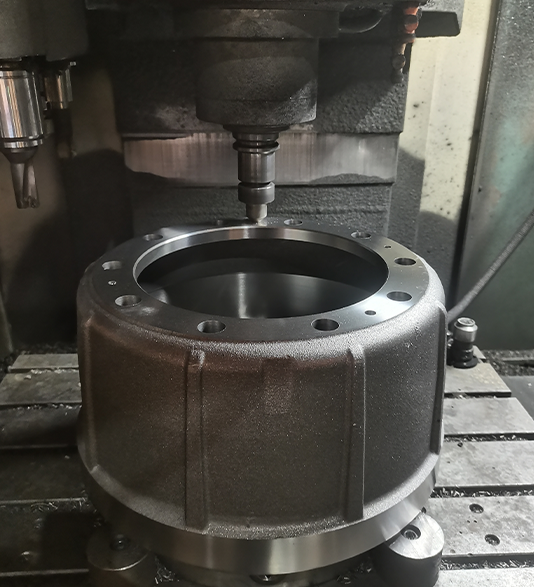Nov . 30, 2024 07:13 Back to list
Innovative Approaches to Brake Drum Design and Engineering Solutions
Brake Drum Design An Overview
The brake system is a critical safety component in any vehicle, and the design of brake drums plays a significant role in ensuring effective braking performance. The brake drum is part of a drum brake system, which uses friction to slow down or stop the rotation of the wheel. The design of brake drums has evolved over the years, driven by advancements in materials, manufacturing techniques, and performance requirements.
Basics of Brake Drum Functionality
A brake drum is typically made from cast iron or a composite material, engineered to withstand the high temperatures generated during braking. When the driver presses the brake pedal, hydraulic pressure pushes the brake shoes outward against the inner surface of the brake drum. The friction between the shoes and the drum slows down the wheel's rotation, ultimately bringing the vehicle to a stop. The effectiveness of this system depends heavily on the design and material of the brake drum.
Key Design Considerations
1. Material Selection The choice of material is crucial. Traditional cast iron offers excellent heat dissipation and resistance to wear, but modern vehicles often use composite materials that are lighter and can improve overall efficiency. The material must balance strength, weight, and thermal management to enhance performance.
2. Shape and Size The diameter and width of the brake drum affect the braking force. Larger drums provide a greater surface area for friction, which increases braking efficiency. However, increased size can add unwanted weight, impacting overall vehicle performance. Therefore, designers must carefully consider the balance between size and efficiency.
3. Ventilation Heat management is one of the most significant challenges in brake drum design. During heavy braking, the drums can become extremely hot, leading to brake fade, where the braking efficiency diminishes due to overheating. Many modern brake drums are ventilated to allow air to circulate, cooling the brakes more effectively and enhancing performance.
brake drum design

4. Surface Finish The inner surface of the brake drum must have a specific finish to ensure optimal contact with the brake shoes. A rougher surface can create more friction but may also wear out the shoes faster. Conversely, a smoother surface can reduce wear on the shoes but might compromise braking performance. Finding the right balance is essential for longevity and efficiency.
5. Weight Distribution Proper weight distribution is vital for maintaining vehicle stability and control during braking. The design of the brake drum should help keep the vehicle’s center of gravity low to improve handling, especially under heavy braking conditions.
Innovations and Future Trends
Advancements in technology are continually shaping the design of brake drums. Innovations such as computer-aided design (CAD) and finite element analysis (FEA) allow engineers to simulate and optimize designs before production. These technologies enable the development of brake drums that are lighter, stronger, and more efficient.
Additionally, the growing emphasis on electric and hybrid vehicles has introduced new challenges in brake design. Regenerative braking systems, often used in these vehicles, require new approaches since they operate differently compared to traditional systems. Brake drums must be designed to work effectively with these technologies, incorporating features that enhance performance while minimizing wear.
Conclusion
The design of brake drums is a critical aspect of automotive engineering that directly impacts vehicle safety and performance. With advancements in materials and technology, designers are continually seeking ways to optimize brake drum design for better efficiency, longevity, and safety. As vehicles evolve, so too will the designs of their braking systems, ensuring that they meet the demands of modern driving conditions while maintaining the highest standards of safety. The future promises exciting developments that will enhance the braking experience and improve overall vehicle performance, keeping pace with the needs of drivers around the world.
-
Scania Brake Drums: OEM Quality for Optimal Safety & Durability
NewsAug.16,2025
-
R.V.I: Advanced Remote Visual Inspection for Precision
NewsAug.15,2025
-
Discover HYUNDA: Innovative Vehicles, Equipment & Solutions
NewsAug.14,2025
-
R.V.I: Unlock Advanced Insights & Real-time Performance
NewsAug.13,2025
-
Kamaz Brake Drum: Durable & Reliable for Heavy Duty Trucks
NewsAug.12,2025
-
Heavy Duty Iveco Brake Drum - Premium Quality & Safety
NewsAug.11,2025
